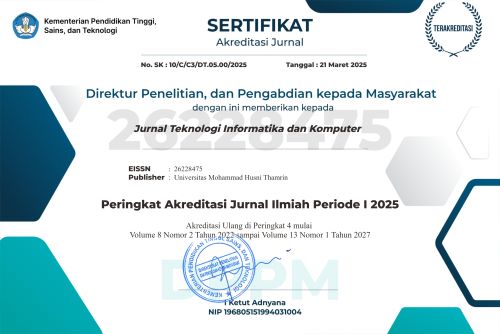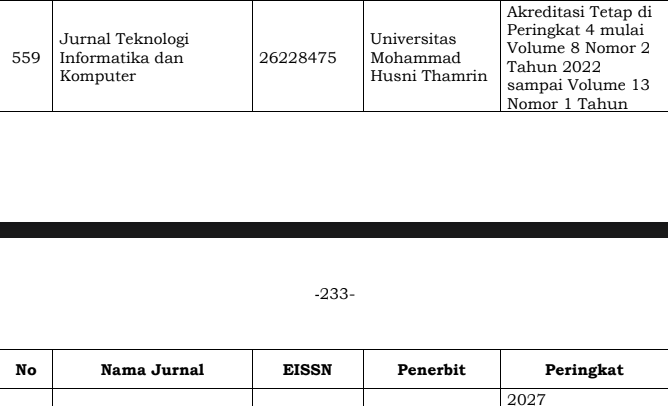Principal Component Analysis and Bacterial Foraging Optimization for Credit Scoring
DOI:
https://doi.org/10.37012/jtik.v11i1.2515Abstract
Information technology in the current era is developing very quickly. Information systems themselves are found in various aspects of life, such as health, law, education and finance. With the improvement of information systems, systems can be created as considerations for making decisions or agreements. Credit scoring is a status that is usually held by banks or other financial institutions and contains data from debtors who have applied for credit at certain banks or financial institutions. There are many attributes in determining whether someone will get good credit or bad credit status. Therefore, a fast and accurate classification method is needed. This research proposes the use of Principal Component Analysis to reduce several attributes without reducing the attributes that are important or crucial in determining. This research also uses the Bacterial Foraging Optimization algorithm to optimize qualification results on the Support Vector Machine which uses 4 kernels, namely Linear, RBF, Polynomial and Sigmoid. The research results show that the Linear kernel accuracy which only uses Principal Component Analysis gets a value of 79%. Then optimized with Bacterial Foraging Optimization to get an accuracy of 81%. So the Bacterial Foraging Optimization algorithm increases accuracy by 2%. For RBF and Poly kernels, the accuracy is the same, namely 78%. For the Sigmoid kernel, it got the best results in Principal Component Analysis, namely getting an accuracy value of 80%.
Downloads
Published
Issue
Section
Citation Check
License
Copyright (c) 2025 Jennifer Arjun, Marsudi Wahyu Kisworo

This work is licensed under a Creative Commons Attribution 4.0 International License.
Jurnal Teknologi Informatika dan Komputer allows readers to read, download, copy, distribute, print, search, or link to the full texts of its articles and allow readers to use them for any other lawful purpose. The journal allows the author(s) to hold the copyright without restrictions. Finally, the journal allows the author(s) to retain publishing rights without restrictions Authors are allowed to archive their submitted article in an open access repository Authors are allowed to archive the final published article in an open access repository with an acknowledgment of its initial publication in this journal.

Jurnal Teknlogi Informatika dan Komputer is licensed under a Creative Commons Attribution 4.0 International License.












